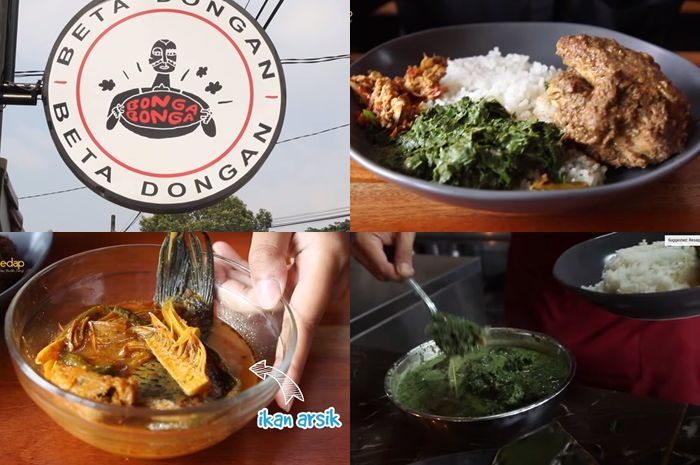
Kitchenesia.com - Foodwise, as the most Moslem populated country in the world, it is obvious that almost everything you find in Indonesian restaurants here serves what Moslems consume, in the category we know as ‘Halal’.
However, being a country diversely rich in heritage and traditions, some ethnic groups – consisting mostly of Non-Moslems – have different menus on their plates.
In Sumatra, particularly for the Batak ethnic group in the northern part of the island, pork is the main dish for most of the Bataknese cuisine, also lard and animal’s blood curd. Nowhere near Halal for sure. And those are the key ingredients for the food.
Like any other Indonesian ethnic groups, Bataknese live, work – and eat – in other regions, too. Other than feasting for their traditional cuisine at wedding ceremonies, Bataknese dine for it at the Lapo, a Bataknese restaurant.
Since most of the indigenous food from the land of Batak people are non-halal, some restaurateurs are trying to change the perception of Bataknese food from “not halal-friendly” to “inclusive to everybody”, an infusion of the two opposite poles.
One of the innovative restaurateurs are two of Indonesia’s screen darlings: Chicco Jerikho and Rio Dewanto.
A halal lapo. A confusion? No. Rather, be in with the fusion!
Laid-back Ambience while Commemorating Batak Tradition
The Bonga-Bonga Lapo is located in Cipete, a district in South Jakarta known for some of Jakarta’s trendiest eateries.

When it comes to the exterior, Bonga-Bonga Lapo comes with chic and modern vibes, not much different from other restaurants near the location. However, with the large eye-catching “Beta Dongan-Beta Dongan” towering the front of place, you certainly can’t miss it.
A bunch of long wooden tables, with standard, white-tiled walls fill the room. With a description like this, some might find its interior mundane. Yet, still family friendly at some point.
I found the restaurant clean. While being modern, Bonga-Bonga Lapo commemorates the traditional Batak tradition with ulos (Batak-shaped woven fabric) hanging from the ceiling. There are also wicker chandeliers hanging high above.
Being modern and all, the interior doesn’t quite resemble traditional Lapo, usually filled with blasting sound from the live music of high-pitched musicians, as well as from the conversation – Bataknese known being loud spoken and such. But when you target a bigger audience, you can’t be too specific, I guess.
Everything is Set in High Altitude at This Restaurant, Excluding The Price
Branding itself as a “Halal Lapo”, Bonga-Bonga prides Chicken Saksang as its main course. The pig blood curd, which is the main ingredient in Saksang, is changed with chicken liver. And of course there is no pork since the pork is replaced with chicken.
Chicken Saksang uses rooster meats only and it is exceptionally big in one portion, even for someone as voracious as I am.
In some cases, the meat of normal rooster has a tendency to become coarse and tough. However, in Bonga-Bonga, the meat is soft and juicy. The dish also uses a plethora of exotic spices of Bataknese, such as andaliman. It is the spice that you can likely find in Pasar Senen Jakarta, where Bataknese will find themselves at home instantly.
Which is why Bonga-Bonga’s chicken Saksang has that same taste with the original Saksang.
Chicken Saksang doubles the pleasure with 3 different sambals: sambal tuk-tuk (candlenut, onion, and cayenne pepper), sambal teri andaliman (andaliman, anchovies, pineapple, and torch ginger), and Kebas Sambal (bird’ eye chilli)
Arsik Carp is also one of the main courses in this restaurant. The original Arsik doesn’t use halal ingredients, that’s why Bonga-bonga’s Arsik recipe is faithful to to the original.
The mixture of sour and salty taste contribute to its fresh aftertaste, completed with yellowish broth made of andaliman and torch ginger (kecombrang).
The prices is reasonable considering the portion. Chicken Saksang or Arsik Carp costs 30,000 rupiahs or approx. 2 USD. (Reporter: Lena and Sera B)






